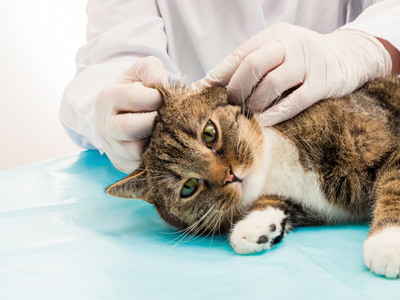Newsletter
Help Your Dog Overcome the "Back-To-School Blues”

Parents and youngsters aren’t the only ones having adjust to a new schedule every fall. Just as kids grow accustomed to the care-free days of summer, dogs get used to the constant attention and play time that a child’s constant presence brings. Many dogs will adjust quickly to the change when school begins again, but those prone to separation anxiety may look for ways to lash out.
10 Common Signs Of Cancer In Small Animals
1. Abnormal swellings that persist or continue to grow
2. Sores that do not heal
3. Weight loss
4. Loss of appetitie
5. Bleeding or discharge from any body opening
6. Offensive odor
7. Difficulty eating or swallowing
8. Hesitation to exercise or loss of stamina
9. Persistent lameness or stiffness
10. Difficulty breathing, urinating or defecating
Blood Testing: What It All Means

Allergy Testing in Pets
 The goal of allergy testing is to identify the specific allergen(s) to which your pet has an allergy. Allergy testing is done either with a blood test (sometimes also called 'ELISA' or 'RAST testing') or with intradermal testing (sometimes also called 'skin testing'). Following the identification of the allergen(s), your pet usually begins a series of injections of a dilute solution of the allergens, with the idea of desensitizing his or her immune system to future allergen exposure. This is called immunotherapy. The exact schedule of injections is tailored to each individual case, but often begins as a once a week injection. The injections are usually carried out over the course of several months to years, and most patients require the injections for life.
The goal of allergy testing is to identify the specific allergen(s) to which your pet has an allergy. Allergy testing is done either with a blood test (sometimes also called 'ELISA' or 'RAST testing') or with intradermal testing (sometimes also called 'skin testing'). Following the identification of the allergen(s), your pet usually begins a series of injections of a dilute solution of the allergens, with the idea of desensitizing his or her immune system to future allergen exposure. This is called immunotherapy. The exact schedule of injections is tailored to each individual case, but often begins as a once a week injection. The injections are usually carried out over the course of several months to years, and most patients require the injections for life.
